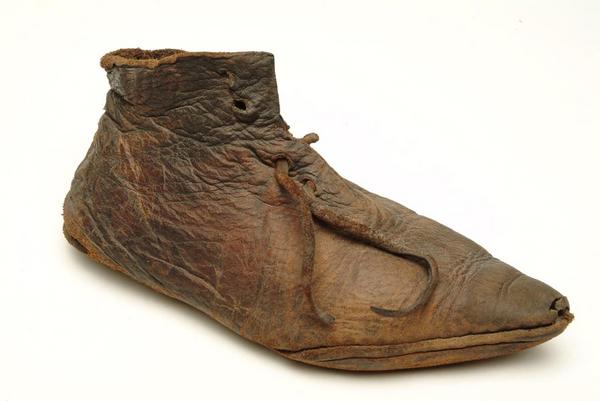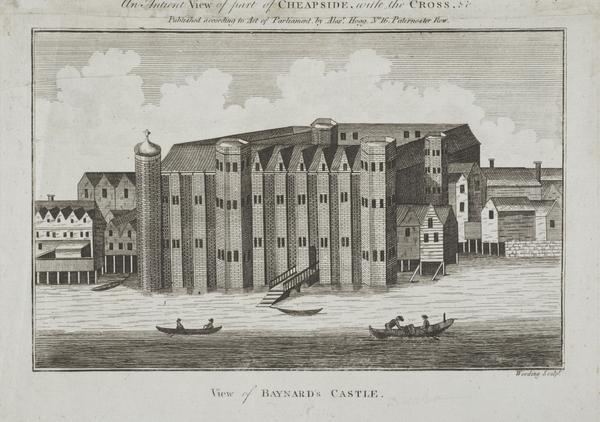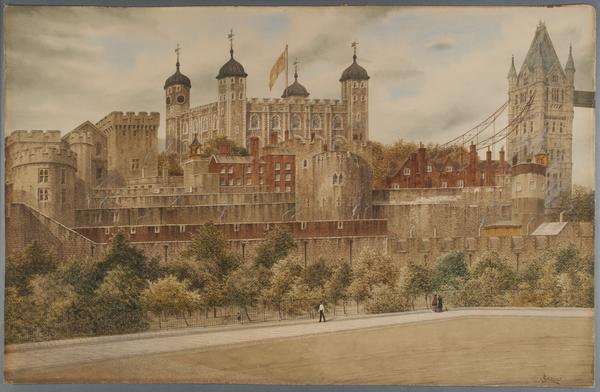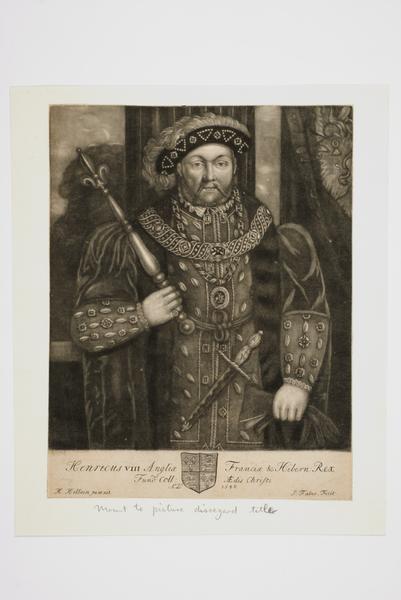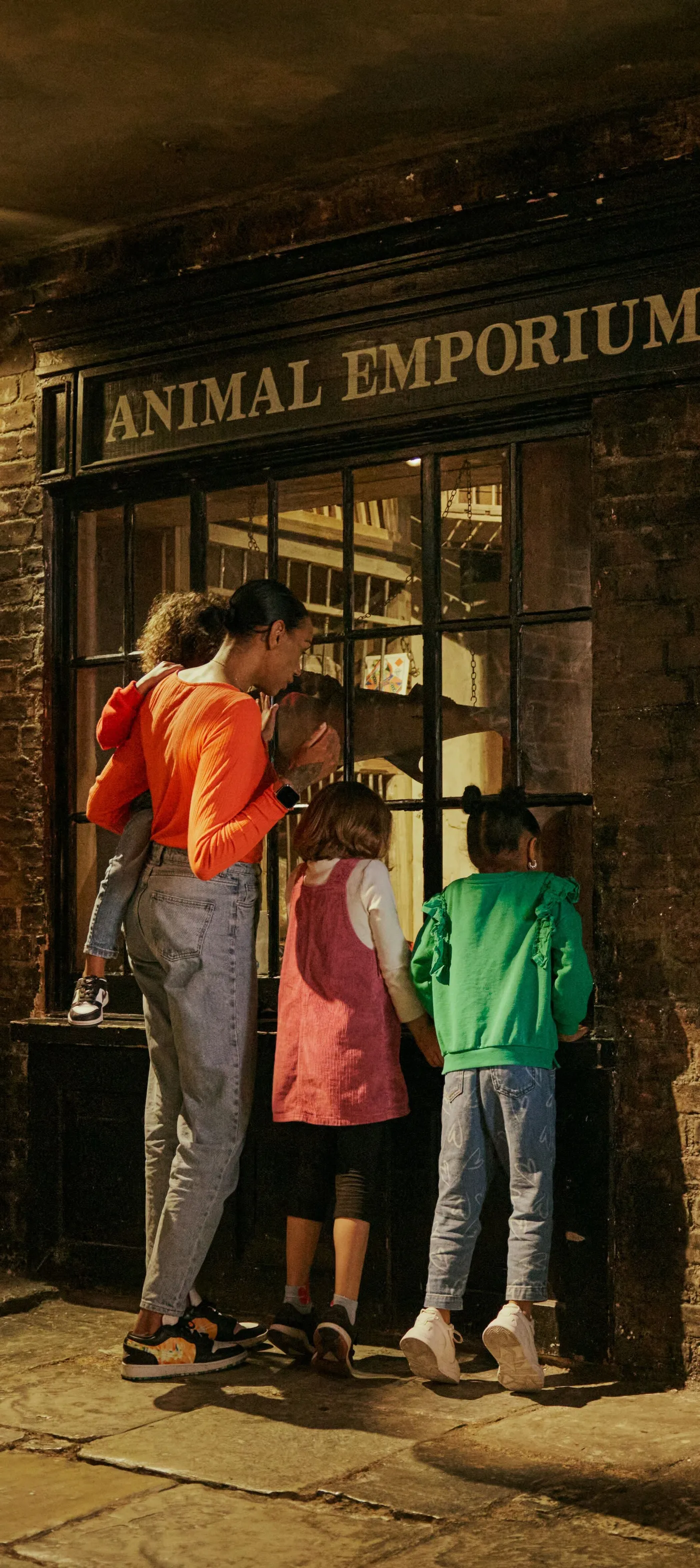Baynard’s Castle: A lost riverside landmark
First built after the Norman conquest of 1066, Baynard’s Castle occupied a riverside site close to modern-day Blackfriars station. In the 1400s, the Tudors made it a grand palace which lasted until the Great Fire of 1666.
Blackfriars
1066–1666
The London castle lost to time
The Tower of London gets all the attention, but Baynard’s Castle has a fascinating story of its own, now buried beneath the buildings and streets east of Blackfriars station.
When William the Conqueror and his Normans invaded England in 1066, they built Baynard’s Castle inside the south-west corner of London’s walls to deter Londoners from rebelling. It was a formidable fortification in a rich city, giving power to whoever owned it.
Over the next four centuries, it passed between important families. It was demolished and burned down a number of times, but was repeatedly adapted and rebuilt. No images of these castles survive.
Around 1501, Henry VII, the first Tudor king, turned it into a grand riverside palace. Henry VIII, his son, made it the official London home of his wives. But the palace parties ended in 1666, when the Great Fire of London wrecked the building for good.
Why was Baynard’s Castle built?
The original Baynard’s Castle was built to help the invading Normans control London.
Baynard’s was one of three Norman castles in London. A short distance away, on Ludgate Hill, there was Montfichet’s Tower. In the east of the city, there’s the surviving White Tower, which grew into the Tower of London.
Who owned Baynard’s Castle?
The castle’s name comes from its original owner, a Norman supporter of William the Conqueror called Ralph Baignard.
King Henry I, who ruled from 1100 to 1135, gave the castle to another powerful noble, Robert Fitz Richard, who then passed it down through his family.
At this time, being the lord of Baynard’s Castle came with a set of official titles which gave you power in London. The lord of the castle was in charge of the city’s militia, for example.
That power was intimidating. In 1213, King John demolished the castle after clashing with Robert Fitzwalter, the grandson of Robert Fitz Richard.
The Fitzwalter family later rebuilt the castle. But in 1428, it burned down. It was then rebuilt by the duke of Gloucester, the uncle of Henry VI.
After the duke died in 1447, the castle passed to the king. It remained royal property from then on and was home to a variety of royals and aristocrats.
“far more beautiful and commodious for the entertainment of any prince or great estate”
John Stow, 1603
Where was Baynard’s Castle?
The first building was placed at the south-west corner of the city, close to modern-day Blackfriars station. It was just inside the city wall, near to where the River Fleet – which now runs underground in sewage tunnels – met the River Thames.
In 1275, the Fitzwalters sold this site to the archbishop of Canterbury. A monastery was built in place of the castle. The monks who lived there were known as Blackfriars for the black cloaks they wore, giving the area its name.

Baynard’s Castle is shown on the Agas Map, printed around 1561.
The Fitzwalters built a new castle on the riverfront a little further to the east. The same spot was used in the 1500s, when the Tudor king Henry VII rebuilt the castle as a palace.
This second site is between present-day Queen Victoria Street and the River Thames. A brutalist office block, Baynard House, was built on the site in the 1970s.
The castle also gave its name to a ward of the city – Castle Baynard. Today, the building’s location is signalled by nearby street names and a plaque on the riverside walkway.
The Tudor palace
Writing in 1603, the historian John Stow described how, around 1501, Henry VII “new built this house, not embattled, or so strongly fortified castle like, but far more beautiful and commodious for the entertainment of any prince or great estate”.
The side facing the river was an impressive sight, an imposing wall of seven towers. On this southern wall, there was also a riverside entrance for those coming and going by boat.
In 1509, Henry VIII gave the palace to his first wife, Catherine of Aragon, for her to live in. From then on, it became the official London home for the Tudor king’s wives, also called the queens consort. Catherine of Aragon, Anne Boleyn and Anne of Cleves all lived there while married to Henry VIII.
Mary I and Lady Jane Grey were both announced as queen at Baynard’s Castle. The palace also hosted royal marriage feasts and extravagant entertainment. The earl of Pembroke, who owned Baynard’s during the reign of the Tudor queen Elizabeth I, entertained her there with a banquet and a fireworks display.
Baynard’s was largely abandoned as a royal residence in the early 1600s. Anne of Denmark, the wife of James I, used Somerset House instead.
How was it destroyed?
After rebounding from previous fires and demolition, Baynard’s Castle was finally destroyed by the Great Fire of London in 1666.
The palace, along with 80% of the City of London, was left ruined. The artist Wenceslaus Hollar drew the castle just before the fire and after it. You can see most of the riverside structure is still standing after the blaze, but was later “pulled down”, according to the historian John Strype’s survey of 1720.
One small part – a tower – survived a little longer, lasting until 1720.
How do we know about it?
Baynard’s Castle is mentioned in historical documents, including John Stow’s Survey of London from 1603. William Shakespeare mentions Baynard’s Castle in his play Richard III. It also shows up on the Agas Map, one of our best maps of the city from this period, which was printed around 1561.
Archaeologists investigating Baynard’s Castle in the 1970s discovered the foundations of several of its towers. They also found some medieval textiles, including fragments of a luxurious Chinese twill damask, which is a patterned fabric made using silk. This one was decorated with peonies.

Excavations of the castle, showing the foundations of a tower.







